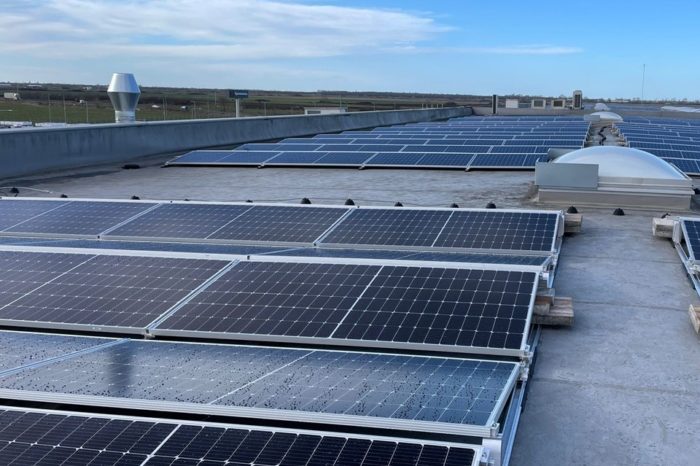Romania’s Approach to Address Current Challenges – The Critical Role of Investments in Enhancing Productivity

Opinion by Leonardo Badea (BNR)
The year 2025 finds Romania and the entire world at a crossroads, in which known long-term vulnerabilities are increasing (population aging in many developed and emerging countries, environmental degradation, social inequalities are deepening), and the transformation induced by the advance of digital technologies is already becoming difficult.
Although the aforementioned difficulties can be overcome through collaboration and concerted effort, the competition between countries and economic/ideological blocs that has become steadily more intense requires more extensive resources, and the emphasis on resilience and competitiveness is becoming increasingly important.
This new reality, which applies to any of the approximately 200 countries worldwide, is perceived differently depending on local particularities. For Romania, due to its geographical proximity to the Russia-Ukraine war and its position on the border of the European Union’s geopolitical and economic bloc, as well as for other countries in a similar situation, the effort and resources necessary to maintain the stability and solidity of systems (economic, social, political, security, etc.) are proportionally greater compared to the size of the country (area, population, economy).
At the same time, although our country has made huge progress since its accession to the European Union, economic growth has in some periods been accompanied by imbalances, which, especially in recent years, against the background of the known crises, have become more pronounced and require an urgent approach.
The persistently high levels of the current account deficit and the fiscal deficit (the two being closely linked) are among the main concerns now regarding the sustainability of the Romanian economy. At least in the case of the current account deficit, levels of productivity and competitiveness exert a significant influence.
For these reasons, reaccelerating the upward dynamics of productivity and boosting the other elements that contribute to improving competitiveness are among the necessary conditions for returning to a faster pace of sustainable economic growth.
However, as recent developments have shown, the rise in labor income, disconnected from economic and productivity dynamics, leads to higher imports, twin deficits that are difficult to correct, a growing public debt, and increased interest rates associated with it.
In economic theory, the concept of productivity is approached from multiple perspectives. Particular importance is given to studying the productivity of each factor of production (e.g. labor, capital), but also to productivity gains resulting from elements whose influence is difficult to quantify, namely technological progress, increased efficiency, optimal combination of production factors, improved organizational and institutional climate (organization, governance, legislation, policies), the level of employee training, favorable exogenous factors (environmental conditions and geopolitical stability), etc.
One perspective to approach productivity is to look at technological progress in association with the concept of total factor productivity, also known as the Solow residual, after the name of the economist who introduced it and for which he won the Nobel Prize. This concept measures the effects that efficiency in the production process has on the evolution of GDP. Technological progress can occur based on several factors, such as changes in the composition of the workforce, more appropriate procedures and governance, human capital, research and innovation, the allocation of resources in the economy, specialization in certain areas, etc. As can be seen from this description, depending on the nature of the factors mentioned, total factor productivity can be decomposed according to the contribution of the labor factor and the capital factor, respectively. The effects of technological progress can have a high degree of persistence or can even be permanent, but they can also have effects that are felt only at the frequency of the business cycle. In other words, some developments in technological progress are responsible for the long-term trends observed in the economy, while others influence cyclical developments. In the case of Central and Eastern European countries, accession to the European Union led to irreversible transformations for economies and productivity. At the same time, the Draghi report on increasing the EU’s international competitiveness provides for some measures that de facto determine the effects of increasing technological progress, especially in areas that influence long-term trends in the economy, i.e. sustainable economic growth.
Consequently, productivity is influenced by a wide range of factors, and addressing most of them requires both public and private financing, as well as the efficient allocation of funds.
The analysis of total factor productivity (TFP) data obtained from the AMECO database of the European Commission’s Directorate-General for Economic and Financial Affairs shows that Romania has indeed had one of the fastest growth rates in the medium term compared to the countries in the region. For example, the estimated figures for 2024 indicate an increase in total factor productivity of around 19.5% in Romania, 18.1% in Poland, 12.1% in the Czech Republic, and 10.2% in Hungary over the past 10 years. However, the same estimates show, in the case of Romania (and also Hungary), that total factor productivity has interrupted its growth trend in the last two years (2023 and 2024) and that this situation could continue in 2025 and 2026 amid overlapping shocks (empirically, it can be observed that the strong shocks felt after the outbreak of the 2008-2009 financial crisis caused a temporary reversal of the total factor productivity trend).
The interplay between productivity and public finances becomes particularly evident during periods of economic volatility. A slow advance in productivity has an unfavorable effect on sustainable economic growth, limiting the tax base and making it more difficult for the government to adequately manage the budget deficit. At the same time, periods of slower economic growth are often accompanied by increased pressures on public spending, a natural outcome of the authorities’ justified need to finance social programs aimed at supporting vulnerable communities.
National productivity dynamics can be affected by structural bottlenecks such as inadequate infrastructure, falling behind in the digitalization of operations, limited capacity for technological innovation within domestic firms, and unequal or uncorrelated levels of labor force qualification with current or future market requirements.
To address these issues, economic policies must give equal priority to human capital development and investment.
Productivity is a key element for sustainable economic development and is a fundamental objective for emerging economies in their transition to gaining advanced economy status. In a broader perspective, both in terms of determinants and evolution over time, productivity can be viewed as value added or production achieved over a certain number of hours worked. This ratio of value added per unit of time provides a detailed view of an economy’s long-term productivity. However, when considering a shorter time horizon, the information provided by this ratio may be skewed by certain factors that influence its elements.
The factors referred to above may vary depending on the phase of the economic and financial cycle, expansion or contraction, and on the degree of development of the economy, respectively. For example, due to economic development or during expansion phases of the economic cycle, people may prefer to reduce the efforts devoted to work, to the detriment of an additional income. Or, under the same scenario, people may become more selective about the activities they engage in, with some being taken over by individuals seeking to integrate and willing to accept lower wages – a phenomenon increasingly visible in the advanced economies of Western Europe. On the other hand, a sudden increase in the cost of living, such as the episode associated with the inflationary surge in 2023 caused by the war in Ukraine, may lead to decisions to increase the number of hours worked, especially as employees look to maintain or improve their living standards. Moreover, the evolution of the number of hours worked according to economic developments has given rise to a series of intense debates led by top economists with remarkable influences on economic thought, such as Finn Kydland, Edward Prescott, Jordi Galí, Michael Woodford, Larry Christiano, or Gita Gopinath, among others.
Some specialized studies emphasize that technological progress is one of the main factors explaining differences between countries in terms of economic development, and is also a determining factor for the evolution of economic growth. In other words, technological progress represents a neutral multiplier, which contributes positively to real GDP growth when the two production factors in the economy, labor and capital, do not change, hence the concept of residual.
In the case of our country, over a broader time horizon, between 1996 and 2023, the link between the growth rate of technological progress (or the growth rate of total factor productivity) and economic growth is strong, the correlation being over 80% (based on the standard Pearson correlation coefficient).
Accession to the European Union has strengthened this link, so that, for the 2007-2023 horizon, the correlation between the evolution of technological progress and that of the economic growth rate was over 90% (also based on the standard Pearson correlation coefficient). Specific analyses (based on quantile regressions) highlight the fact that the evolution of technological progress has asymmetric effects on economic growth across the phases of economic cycles, having a significantly higher impact in the case of phases of high economic growth than in phases of severe contraction. At the same time, results obtained using a Real Business Cycle (RBC) model for a small, open emerging economy with potential vulnerabilities to external shocks highlight that an increase in technological progress associated with permanent effects on labor productivity played an important role for the growth rate of the Romanian economy during the analyzed period.
Another perspective in line with what has been investigated previously is to look directly at the causality between the rate of productivity growth (TFP) and GDP growth. Specifically, it is analyzed how a positive impulse on the rate of productivity growth (determined by an unanticipated technological shock) impacts economic growth. In this sense, a structural vector autoregressive model, SVAR, was used, and the responses of the two variables to a technological shock were obtained using contemporary restrictions according to which non-technological shocks on economic growth do not affect total factor productivity in the short term. This approach is inspired by Galí’s (1999) vision of separating technological from non-technological shocks in an SVAR model, while being also in line with the vision of Real Business Cycle models, according to which technological progress is fully exogenous in the short term. In the figure above one may observe that, after an initial impact of 2.91 percentage points, the cumulative response of the productivity growth rate is 4.43 percentage points over a ten-year horizon. On the other hand, the GDP growth rate shows an initial response of 2.51 percentage points, while the cumulative response over the investigated horizon is 4.24 percentage points. As mentioned earlier, in the literature and practice, technological progress can be perceived as a neutral multiplier. In this case, based on the results presented in the two plots above, we can conclude that a positive impulse on the productivity growth rate is translated initially in proportion of 86% in the reaction of the economic growth rate, with the cumulative effect over a ten-year horizon reaching up to a transmission rate of 96%. This approach was inspired by Blanchard and Perotti’s (2002) vision of calculating fiscal multipliers in a SVAR model.
The policy framework must continue to favor the channeling of public and private investments predominantly towards sectors of the economy generating tradable goods and services that can produce more added value.
At the same time, we must continue to prioritize education and research, with a focus on strengthening the links between these areas and economic actors (both public and private), while also fostering an environment that supports start-ups and encourages innovative fields and activities. Especially in the current context, it is crucial to offset the restrictive effects on the business environment caused by some changes in fiscal conditions by improving the general conditions for doing business: regulatory simplifications, application of European and international practices of proportionality in regulation and control, reduction of bureaucracy and enhancing digitalization of interactions with central and local administration, strengthening the ethics and competence of public service personnel, etc. Allocating substantial resources to public investments should be paired with a transparent, flexible, and predictable governance and regulatory framework that supports a favorable business environment for private investments.
Investments in human resources and capital require adequate financing at affordable costs.
From this perspective, one of the strategic advantages that Romania still has is the ability to access a significant volume of European funds in 2025 and beyond.
While the EU’s Multiannual Financial Framework (MFF) remains a consistent source of financing for development projects, Romania and all other Member States also benefit from additional instruments, such as the National Recovery and Resilience Plan – part of the wider EU Recovery and Resilience Facility. This provides a substantial funding stream, which should be actively leveraged.
In a context where private financing may be more limited due to global and regional economic and geopolitical turbulence, tapping into affordable financing resources provided by the EU can offer a critical boost, ensuring the country stays on track with necessary reforms and does not fall behind its international competitors in adapting to new trends and technologies.
By attracting and efficiently using the resources made available by the European Union under much better conditions than those available on international financial markets, Romania can finance a large part of the initiatives necessary to recover the pace of productivity growth and to expand the domestic supply of competitive goods and services, facilitating the reduction of the twin deficits and improving the pace of the debt-to-GDP ratio.
The recent COVID-19 pandemic has been the most significant challenge to the world’s economies since the financial crisis of 2008-2009. However, unlike other financial crises and economic recessions observed in history, which were usually caused by internal imbalances, the recent pandemic crisis has dictated the evolution of the real and financial economic sectors in an exogenous manner. Unprecedented mobility restrictions, as well as the uncertainty related to the health situation, have significantly affected the resilience of economic agents, as well as their recovery efforts from the impact of the initial shock.
The Next Generation EU economic recovery package was adopted at the European level in this turbulent context, marked by a high degree of uncertainty. Even though this historic package was launched against the backdrop of the pandemic crisis, Next Generation EU was conceived and designed to increase the resilience of European economies to potential adverse shocks, as well as to create favorable conditions for healthy economic growth. The Next Generation EU program, worth over 700 billion euros (with a maximum envelope of 806.9 billion euros), consists of grants and loans accessible during the period 2021-2026 by European economies based on the Recovery and Resilience Plans (NRRPs).
The Next Generation EU program is designed to contribute to sustainable growth of European economies by directing investments towards key pillars such as digital transformation, the transition to a green economy, inclusive economic growth, the development of transport infrastructure, social and territorial cohesion, or increasing education and the quality of health services.
To achieve these objectives, in the case of Romania, 28.5 billion euros are currently allocated, of which 13.6 billion euros are grants, and the remaining 14.9 billion euros are loans. The loans that Romania can access through the NRRP have significantly lower costs compared to those related to loans from the financial markets. To access the full amount allocated through the NRRP, Romania would need to submit eight payment requests. So far, our country has submitted three and received approximately 9.4 billion euros.
The funds Romania has accessed through the NRRP have positive effects on economic growth, potential GDP, the balance of payments, and, last but not least, on the fiscal and budgetary situation.
A recent study conducted by the European Commission highlights that the implementation of investments related to allocations through the NRRP by 2026 could lead to an additional growth of the Romanian economy of about 3.51%. This estimate by the European Commission refers to the direct impact of investments on economic growth. However, if indirect or second-round effects are also taken into account, the impact on economic growth increases from 3.51% to 3.75%.
In addition to the short-term impact mentioned above, investments from the NRRP could also have positive effects on the long-term economic outlook, by increasing potential GDP. Thus, unprecedented investments in areas such as transport or energy infrastructure, where our economy has important structural deficiencies, could lead to an increase in overall production capacity.
For example, the Moldova motorway (A7) represents one of the most important infrastructure projects since 1989. The importance of transport infrastructure for economic development is widely recognized, with economists often stating that where the motorway begins, well-being follows. The Moldova motorway will connect the east of the country with European road sections and economically developed areas in Western Europe, and this could increase the interest of foreign or local investors in opening offices or expanding businesses in Moldova, just as we observe in some areas in the west of the country such as Cluj, Oradea, or Timisoara.
Channeling more investments to the eastern part of the country could significantly develop businesses in counties such as Vaslui or Botoșani, which are otherwise the poorest in Romania, according to the GDP/capita indicator (data source: National Commission for Strategy and Prognosis). At the same time, these counties have among the highest unemployment rates in Romania, according to the National Institute of Statistics. Finally yet importantly, they are characterized by a high rate of labor emigration to developed economies in Western Europe. By putting all these factors together, the implicit effects would include reducing unemployment, increasing incomes and living standards, lowering public spending on state aid, and creating new incentives for Romanians abroad who wish to return home and apply the experience gained in the West.
Let us not forget that a significant part of the grants received through the NRRP finance much-needed public investment objectives. In the absence of Union funding, we would have had to either delay (how long?) the achievement of these critical objectives, or borrow more and pay higher interest rates than we already do. From this perspective of the favorable effect of the NRRP on our public debt level, it is important to take into account the positive effects of the investments thus financed on economic growth, respectively on the perception of sovereign risk. Regarding the second aspect, reports from international rating agencies and investment banks highlight the positive role of attracting funds from the NRRP and implementing related projects in improving the perception of sovereign risk. This, in turn, reduces the risk premiums on bonds issued by Romania and, implicitly, the cost of debt. This is achieved through two channels: i) as a result of the signal that good governance is in place to implement sustainable reforms, and ii) against the backdrop of the effect of easing macroeconomic imbalances. Therefore, a high degree of absorption of European funds has multiple effects, including reducing pressure on public debt.
It is no secret that a strong economy requires the maintenance of many variables and their interrelations at optimal levels. Productivity plays a critical role in improving the macroeconomic situation, serving as a key driver for sustainable economic growth and external competitiveness. Investments aimed at boosting productivity are essential, and securing financing through European programs is an opportunity we must fully capitalize on. At the same time, to paraphrase Peter Drucker, efficiency means doing better what is already being done, and, in this regard, simplifying regulations, reducing bureaucracy, and supporting digitalization are crucial steps to enhance the effectiveness of investments, fostering an attractive, competitive, and prosperous environment for work and business.















